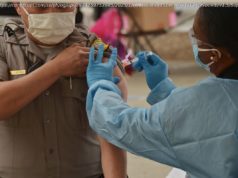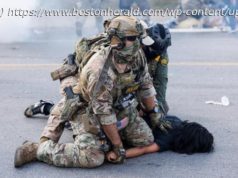The incident was reportedly work-related and not linked to terrorism.
Five people, including the gunman, are dead after a workplace shooting in Orlando, Florida. The story is quickly developing, so some details may be wrong and may change. But here’s a rundown of what we know, based on the best information available so far. The shooting is a devastating tragedy, but also the kind of event that Americans have become increasingly familiar with over the past several years — including at a gay nightclub in 2016. And as the country deals with a level of gun violence unmatched by other developed nations, the question has often turned to what restrictions on firearms could help reduce how many shootings happen year after year. No other developed country in the world has anywhere near the same rate of gun violence as America. The US has nearly six times the gun homicide rate of Canada, more than seven times Sweden’s, and nearly 16 times Germany’s, according to compiled by the Guardian. (These gun deaths are a big reason America has a, which includes non-gun deaths, than other developed nations.) What’s more, there appears to be a correlation between America’s high levels of gun violence and gun ownership, as this chart from shows: Research reviews by the have concluded that more gun ownership leads to more gun violence. Other factors, such as socioeconomic issues, contribute to violence, but guns are the one issue that makes America unique relative to other developed countries in comparable socioeconomic circumstances. Studies have found this at both the state and country level. Take, for instance, this chart, from a 2007 by Harvard researchers, showing the correlation between statewide firearm homicide victimization rates and household gun ownership after controlling for robbery rates: A more recent from 2013, led by a Boston University School of Public Health researcher, reached similar conclusions: After controlling for multiple variables, the study found that a 1 percent increase in gun ownership correlated with a roughly 0.9 percent rise in the firearm homicide rate at the state level. This holds up around the world. As, a breakthrough analysis in 1999 by UC Berkeley’s Franklin Zimring and Gordon Hawkins found that the US does not, contrary to the old conventional wisdom, have more crime in general than other Western industrial nations. Instead, the US appears to have more violence — and that’s driven in large part by the prevalence of guns. “A series of specific comparisons of the death rates from property crime and assault in New York City and London show how enormous differences in death risk can be explained even while general patterns are similar, ” Zimring and Hawkins wrote. “A preference for crimes of personal force and the willingness and ability to use guns in robbery make similar levels of property crime 54 times as deadly in New York City as in London.” Guns are not the only factor that contributes to violence. (Other factors include, for example, concentrations of poverty, urbanization, and alcohol consumption.) But when researchers control for other confounding variables, they have found time and time again that America’s high levels of gun ownership and easy access to guns are major reasons the US is so much worse in terms of gun violence than its developed peers. And stricter gun policies could help. The shows tightening existing gun control measures in the US would help address the toll of gun violence: Studies in both and suggested that gun licensing laws in those states helped reduce homicides and suicides. But as, it would likely take decades for the mild gun control measures proposed in the US to have a significant impact. “It’s all speculation, ” Hemenway said. “I suspect it would take a while (decades) for the US to get down to gun violence levels of other developed countries because a) we have so many guns which are durable, and b) we have a gun culture — we tend to use guns more often in more situations than citizens of other developed countries.” To have a more immediate impact, then, the US would have to find a way to quickly remove the number of guns in circulation. Other countries have actually done that: In Australia, after a 1996, lawmakers passed new restrictions on guns and imposed a mandatory buyback program that essentially confiscated people’s guns, seizing at least 650,000 firearms. According to by Harvard researchers, Australia’s firearm homicide rate dropped by about 42 percent in the seven years after the law passed, and its firearm suicide rate fell by 57 percent. Although it’s hard to gauge how much of this was driven by the buyback program, researchers argue it likely played some role: “First, the drop in firearm deaths was largest among the type of firearms most affected by the buyback. Second, firearm deaths in states with higher buyback rates per capita fell proportionately more than in states with lower buyback rates.” Still, similar policies would be difficult to pass in America, a nation in which gun culture and ownership are tremendously ingrained — notably in the Second Amendment. And gun owners are backed by a powerful lobby: the National Rifle Association. Combined, these forces have stopped any serious gun legislation from passing at the federal level — although have passed new restrictions in the past few years. The result is, based on the evidence, more shootings — including, perhaps, more tragedies like the one unfolding in Orlando.





![Nobel przyznany. Sikorski przekazał wieści o Polakach [SKRÓT DNIA]](http://nhub.news/wp-content/uploads/2025/10/thumbb9eb71a5c26187ed2b791a0698d59b2f-100x75.jpeg)
